I'm making a map with arc lines connecting between counties for the US state of Missouri. I've calculated the 'good enough' centres of each county by taking the mean of each polygon's long/lat. This works good for the more or less square-shaped counties, but less so for the more intricately shaped counties. I think that this must be a common occurrence, but I can't find the answer online or with any function I've created. I'd like to use a tidyverse work flow (i.e. not transform to spatial objects if I can help it). Are there any tidyverse solutions to the problem at hand.
You can see the problem in the examples below.
library(tidyverse)
# import all state/county fortified
all_states <- as_tibble(map_data('county'))
# filter for missouri
mo_fortify <- all_states %>%
filter(region == 'missouri')
## Pull Iron county, which is relatively oddly shaped
mo_iron_fortify <- mo_fortify %>%
group_by(subregion) %>%
mutate(long_c = mean(long),
lat_c = mean(lat),
iron = ifelse(subregion == 'iron','Iron','Others')) %>%
ungroup()
# map a ggplot2 map
mo_iron_fortify %>%
ggplot(aes(long, lat, group = group))+
geom_polygon(aes(fill = iron),
color = 'white')+
geom_point(aes(long_c, lat_c))+
scale_fill_grey('Iron county is\na good example')+
coord_map()+
theme_bw()
